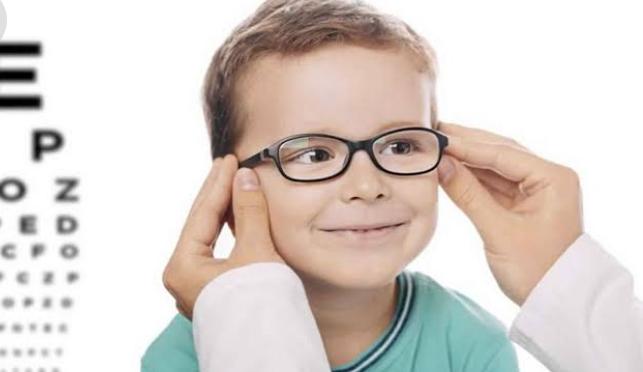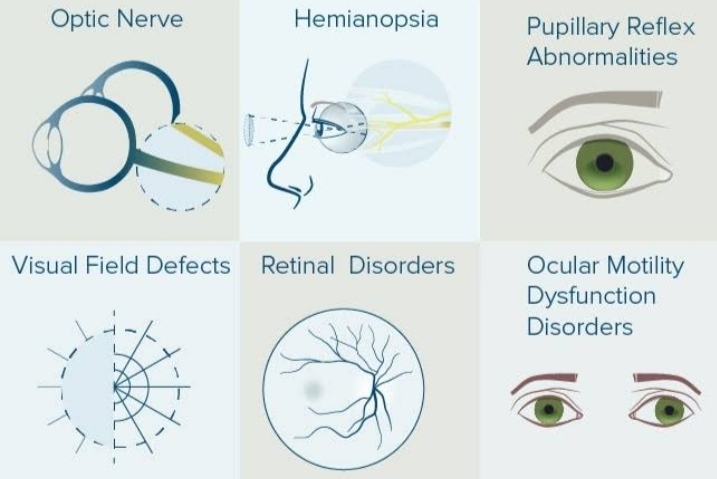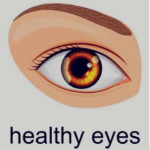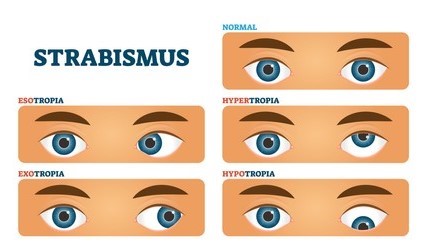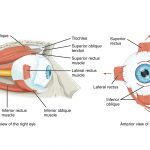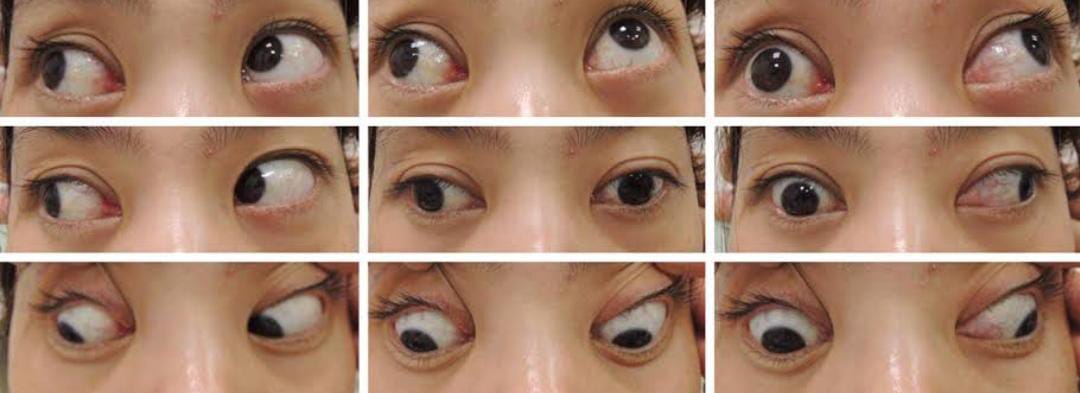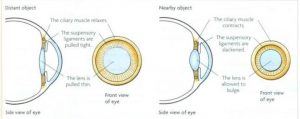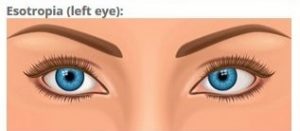Incomitant strabismus is a one-type heterotopia in which the amount of deviation varies in different directions in gazes.
Some examples of incomitant strabismus are paralytic squint and kinetic squint and restrictive squint. Some diseases of the Nervous system with ocular manifestations affect the nuclei, the nerves, or the muscles, the relative coordination of the eyes is disturbed and diplopia and other symptoms appear.
Paralytic squint – when paralysis of extraocular muscles
Kinetic squint – due to overaction action or irregular action of extraocular muscles
Restrictive squint – restriction of eye movement is due to local disease in the orbit, nerve paralysis, or muscle weakness.
Paralytic squint – It refers to misalignment of the visual axes which results from complete or incomplete paralysis of one or more extraocular muscles.
Etiology – It may be a neurogenic lesion Or muscular lesion
- Neurogenic lesion – Neurogenic lesions may occur at the level of the nerve nucleus, nerve root, or any part of the nerve in the course. Nuclear ophthalmoplegia refers to paralysis of extraocular muscles due to lesions of the 3rd cranial nerve. Diseases of the central nervous system damage the nuclei. The most common cause is a small hemorrhagic or thrombotic lesion in the mid-brain associated with anterior-sclerosis, diabetes, syphilis, tumors, encephalitis, diphtheria, etc.
- Muscular lesions- Lesions of the muscles as well as of the branches of the nerves may occur with orbital disease or injury, such as trauma or inflammation, etc can damage the trochlea which is the most common type of this lesion. Myositis, dysthyroid eye diseases, myasthenia gravis, etc also include this lesion.
Clinical features of Incomitant strabismus –
Symptoms –
- Diplopia – Diplopia is the main complaint of paralytic squint. It may be crossed or uncrossed diplopia. Binocular diplopia occurs when the formation of an image on dissimilar points of the two retinae, in another hand when an object appears double from the affected eye when the normal is closed then uniocular diplopia forms.
- Confusion – It occurs due to the formation of the image of two different objects on the corresponding point of two retinae.
- Vertigo – It is partly to diplopia and partly false projection. Vertigo leads to nausea and vomiting.
Signs-
- Abnormal position of head – It is one of the common symptoms of paralytic squint, in that case, the patient holds his/her head so that his /her face is turned in the direction of action of the paralyzed muscle so the eyes are rotated away from the field of action of the paralyzed muscle and diplopia is eliminated. For example – if paralysis of the left lateral rectus muscle patient keeps his/ her face turned to the left and if paralysis of the right lateral rectus muscle patient keeps his/her face turned to the right.
- False orientation – False orientation will be seen from what has already been said that false orientation is a necessary accompaniment of binocular diplopia. If a patient is paralyzed his left lateral rectus shuts his/her right eye and attempts to fix an object with his/her left eye. Patient will locate it further away in the same direction.
- Visual acuity is normal and there is no amblyopia
- Primary deviation – It is the deviation of the affected eye and away from the action of paralyzed muscle for example medial rectus paralyzed the eye is divergent and squint is divergent squint.
- Secondary deviation – It is the deviation of the normal eye seen undercover, when the patient is made to fix with the squinting eye, it is greater than the primary deviation.
Treatment – Treatment should be directed to the cause of palsy. Diplopia may sometimes be relieved by suitable prisms. Surgery is another treatment for paralytic squint.
Kinetic squint – This type of squint occurs in irregular action or overaction of certain muscles, caused by unequal stimulation of the nerve center or nerve. Such squints may occur in meningitis and lesion of the midbrain or cerebellum, such as tumors.
Restrictive squint – In this type of squint the extraocular muscle is not paralyzed but its movement becomes restricted. This can be due to local disease in the orbit, apart from nerve paralysis or muscle weakness.
This can also arise due to conditions that lead to mechanical restriction of the extraocular muscles due to conditions lead to a mechanical restriction of the extraocular muscles due to absent muscle, (Thyroid eye disease, myositis), abnormal innervations such as aberrant regeneration of the third nerve, and Duane retraction syndrome. This condition may be congenital or acquired and the latter are usually due to trauma, inflammation, or neoplasia.

